Residential and commercial properties can benefit from shade trees. Here is a list of trees to consider planting in the mid-Atlantic area. Placing a shade tree in the correct location can save on cooling bills, provides shade for outdoor activities, increase re-sale value, and block winds from affecting homes in addition to providing food and habitat for wildlife.
Large Shade Trees
Betula nigra – River Birch 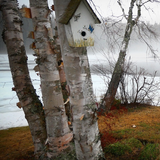
- Grows 40-70’ tall by 40-60’ wide
- Medium to wet soils
- Multi-stem and single stem
- Bark exfoliates cream/salmon
- Drought tolerant once established
Quercus phellos – Willow Oak 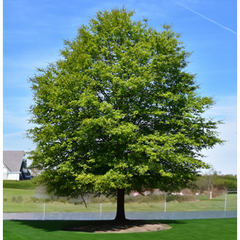
- 40-60’ tall by the same width
- Good resistance to pests
- Full sun to part shade and medium to wet soils
- Relatively fast growing for an oak
- Long-lived with a good tap root and smaller leaves having less impact on lawns
Taxodium distichum – Bald Cypress
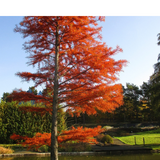
- 50-70’ tall by 20-35’ wide
- Pyramidal deciduous conifer
- Small needles turn orange in autumn
- Full sun and tolerates clay or medium to wet soils
- Almost feathery appearance
- Considered to be extremely resistant to wind damage
Metasequoia glyptostroboides – Dawn Redwood 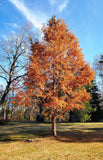
- 70-100’ feet tall by 25-30’ wide
- Pyramidal deciduous conifer and can be limbed
- Small needles turn orange in fall
- Fissured cinnamon-colored bark adds winter interest
Gleditsia triacanthos inermis – Thornless Honey Locust
- 40’ tall by 25-30’ wide
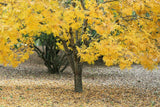
- Airy shade tree with small, rounded leaves
- Turns yellow in the fall
- Prefers well-drained soils and full sun
Gingko biloba
- 50-80’ tall x 30-40’ wide
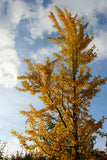
- Can take moist to well-drained soils
- Very long-lived and a slow-grower
- Great fall color – vivid yellow
- Leaves are scalloped small and leathery
- MAKE SURE YOU GET MALE TREES!!! – Females produce very offensive-smelling fruits in fall.
Quercus bicolor – Swamp White Oak
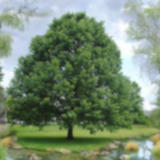
- 50-70’ tall by 50’ wide
- Prefers full sun and medium to wet soils
- This tree would work for blocking the side road near a pond
- Nice acorn producer for wood ducks
Quercus velutina – Black Oak
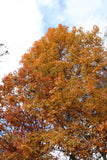
- 50-60’ tall by 50-60’ wide
- A stately oak when mature with yellow fall color
- Deep tap root
- Prefers well-drained to moist soils and full sun
Quercus rubra – Northern Red Oak
- 50-70’ by the same width
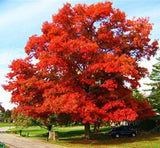
- Drought tolerant once established
- Full sun and well-drained soils
- Long-lived
Smaller Shade Trees
Nyssa sylvatica – Black Gum – Tupelo Tree 
- This tree does not get gumballs!
- 30-40 by 20-30 wide - a nice smaller tree for the landscape
- Full sun to part shade and can take clay soils
- Small white to green flowers in spring attract and provide for bees
- Tupelo Honey – Turns flame red to orange in the fall – best fall color of any tree if adequate moisture in summer and also produces very small berries which birds relish
Acer palmatum - Bloodgood , Japanese Maple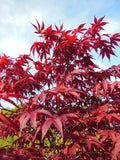
- 20-25’ tall by 18-20’ wide
- Small, upright maroon-leaved maple for a specimen effect
- Use against larger evergreens to give it a little shade and it will hold color better
- Prefers full sun to part shade and medium to well-drained soils
- Leaves have no real fall color
Acer griseum – Paperbark Maple
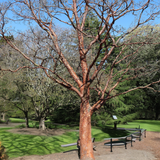
- 20-30’ x 15-20’ wide
- A nice small specimen maple that offers great orange-red fall color
- The cinnamon bark peels and is a standout in the winter landscape
- Full to part sun and moist to well-drained soils
- Small trifoliate leaf does not harm lawns
Chamaecyparis nootkatensis ‘Pendula’ – Weeping Alaskan Cedar
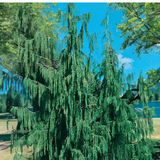
- 20-35’ tall by 12-18’ wide
- Full sun to part shade and moist to well-drained
- Thrives best if allowed to weep to the ground and easier to maintain in a bed area
- Likes good air circulation and does not like high humidity
- Grows in open garden beds best
- A great specimen and snow will fall off of branches
Pinus strobus – White Pine 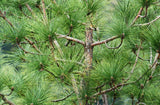
- 20-40’ tall and wide and fast-growing
- Prefers well-drained soils and full sun
- A nice evergreen with soft blue-green needles that shed in fall
Pinus thunbergia - Japanese Black Pine

- Prefers well-drained soil and full sun
- Can be long-lived but sometimes all of a sudden one will just die, but still used all the time and worth the effort. Just stagger when planting so the hole can fill in.
- This irregular spreading pines gets white candles in the spring and summer which offer contrast
Cedrus deodara - Himalayan Cedar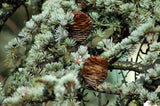
- 40-50’ tall by 30-40’ wide and a fast-growing evergreen
- Prefers moist to well-drained soil
- pyramidal in shape making a nice specimen evergreen











